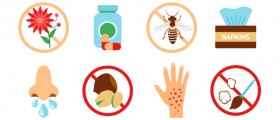
Shrimp allergy facts
When it comes to food allergies, this one is one of the most common. Experts agree that shrimp allergy is a highly sensitive reaction that people have when they have eaten one or more shrimps. Physical contact with the shrimp will provoke an allergic reaction in a pretty small number of people. It is quite rare. The same goes if a person breathes in the steam which is released when the shrimps are being cooked. Shrimp contains some proteins to which some people are intolerant to and that is the reason of most allergic reactions. The fact that a person is allergic to another type of shellfish like crabs, oysters or crayfish is not important. When the immune system stops to function properly, allergic reactions occur. In case of shrimp allergies, the immune system mistakes the proteins for some toxic substance and histamines and some other antibodies are released to fight off the negative effects. It is these antibodies that cause allergic symptoms and signs.
Shrimp allergy symptoms
Most common symptoms are hives, itchy skin rashes, eczema and a runny nose. Some others are eye irritation, dry throat and a tingling feeling inside the mouth. Of course, these symptoms can be mild or severe and the intensity of the symptoms will be different with every person. These symptoms usually appear and hour after the person has eaten the shrimps. However, it may be a while longer as well. Some people may even experience tongue and throat swelling as well as swelling of lips and face. Not that uncommon are nausea, diarrhea and abdominal pain. Even anaphylactic shock may occur which can be life-threatening but such a case is quite rare. Anaphylactic shock occurs because of swollen lungs which will decrease the amount of air which needs to pass and thus a person will have problems to breathe properly.
Shrimp allergy treatment
The best way a person can prevent these reactions from showing up is to stop eating shrimps. However, if they do occur, it is best that a person goes to a doctor. If the case is not that serious, the doctor will most likely prescribe an antihistamine. On the other hand, if the symptoms are serious and there is a chance of an anaphylactic shock, a person will be rushed to the emergency room. There, he or she will receive a epinephrine injection. This will ease the muscles and make the breathing possible again.

















Your thoughts on this
Loading...